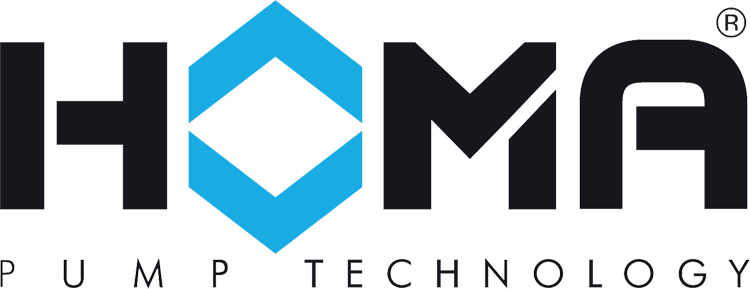How Smart Monitoring is Changing Wastewater Treatment
The wastewater treatment industry is quietly changing. Behind the scenes, smart monitoring technologies are transforming how operators manage pumps, identify problems, and maintain performance. This isn’t just about adopting new gadgets; it’s about rethinking how systems are monitored and maintained for greater reliability, efficiency, and safety.
At HOMA Pump Technology, we recognize the role smart monitoring plays in optimizing wastewater operations. As a manufacturer of advanced submersible pumps and monitoring systems, we’re proud to be part of the movement toward smarter, data-driven wastewater management.

From Reactive to Proactive: A New Paradigm in Pump Monitoring
Traditionally, wastewater facilities relied on periodic inspections and reactive maintenance to keep pump systems running. Failures were often only discovered after a clog, electrical fault, or mechanical failure had already caused downtime.
Smart monitoring changes that. By using integrated sensors and connected control systems, operators can now track the real-time status of pumps. Temperature, vibration, seal leakage, motor current, and performance metrics are continuously monitored. This allows for early detection of issues — often before they impact operations.
The shift from reactive to proactive maintenance isn’t just about convenience. It’s about protecting critical infrastructure, minimizing unplanned outages, and improving public and environmental health outcomes.
Key Benefits of Smart Pump Monitoring
1. Early Fault Detection
Sensors detect subtle anomalies such as rising temperatures or irregular vibration patterns. These indicators often precede mechanical or electrical failures. For example, if a pump begins to overheat due to a partial clog, a smart monitoring system can alert operators before the pump trips offline.
2. Predictive Maintenance
Historical trend data enables predictive maintenance strategies. Operators can schedule repairs or part replacements before failure occurs. This minimizes emergency call-outs and extends equipment life.
3. Optimized Performance and Energy Use
Smart systems track real-time performance metrics, helping operators adjust set points or cycle schedules for better efficiency. Pumps running off their Best Efficiency Point (BEP) can be flagged, allowing interventions that reduce power consumption and wear.
4. Remote Monitoring and Alerts
Modern monitoring platforms integrate with SCADA or mobile interfaces, enabling remote oversight. Operators receive alerts on mobile devices or control room dashboards, allowing quick responses to developing issues.
Technologies Driving Smart Pump Monitoring
Integrated Sensors
Most modern submersible pumps, including those from HOMA, come equipped with temperature and moisture sensors. These built-in diagnostics form the backbone of a smart monitoring ecosystem, providing essential data points for pump health assessment.
SCADA and IIoT Connectivity
Supervisory Control and Data Acquisition (SCADA) systems aggregate sensor data and provide historical trends. When combined with Industrial Internet of Things (IIoT) platforms, these systems enable real-time analysis, alerts, and cloud-based data access.
Advanced Analytics
Smart monitoring isn’t just about seeing data — it’s about interpreting it. Analytics engines can detect patterns and anomalies that suggest developing issues, like early signs of impeller wear or seal degradation.
Example: HOMA VICON System
HOMA’s VICON system exemplifies how smart technology can be applied to pump monitoring. It offers real-time vibration diagnostics, condition monitoring, and detailed performance insights. By detecting out-of-balance operation or other early warning signs, it helps prevent costly failures and reduces energy waste.
Real-World Impact: How Smart Monitoring Improves Operations
Improved Reliability
Facilities that implement smart monitoring experience fewer surprises. Unplanned downtime is reduced as issues are caught early. This is particularly valuable in mission-critical lift stations where even short outages can lead to overflows or regulatory violations.
Lower Operating Costs
While smart systems require investment, the return is clear. Avoiding a single catastrophic failure or overflow event often offsets the cost of monitoring. Over time, energy savings and reduced emergency maintenance yield significant OPEX reductions.
Enhanced Decision-Making
Smart monitoring provides actionable data that informs pump selection, maintenance planning, and system upgrades. By understanding real-world operating conditions, engineers and operators can make data-driven decisions.
Increased Safety
Remote monitoring reduces the need for confined space entry. Alerts allow for targeted inspections and maintenance, decreasing the risk to personnel and increasing response effectiveness.
Making the Move to Smart Monitoring
Implementing smart monitoring doesn’t have to be complex. HOMA offers pumps with integrated diagnostics, as well as standalone monitoring systems that can retrofit onto existing infrastructure. Our experts help utilities and facility managers identify the best strategies for their systems, whether that means full IIoT integration or step-by-step upgrades.
When selecting or upgrading a pump, consider the long-term value of smart monitoring. It’s not just a feature – it’s a pathway to more efficient, reliable, and safe wastewater management.
Partnering with HOMA for Smart Wastewater Solutions
At HOMA Pump Technology, we engineer pumps that deliver more than flow. With built-in diagnostics, robust materials, and support for advanced monitoring systems like VICON, our products are designed to meet the demands of modern wastewater management.
Ready to bring your system into the smart era? Contact HOMA today to learn how we can help you implement smarter solutions for your wastewater pumping challenges.
